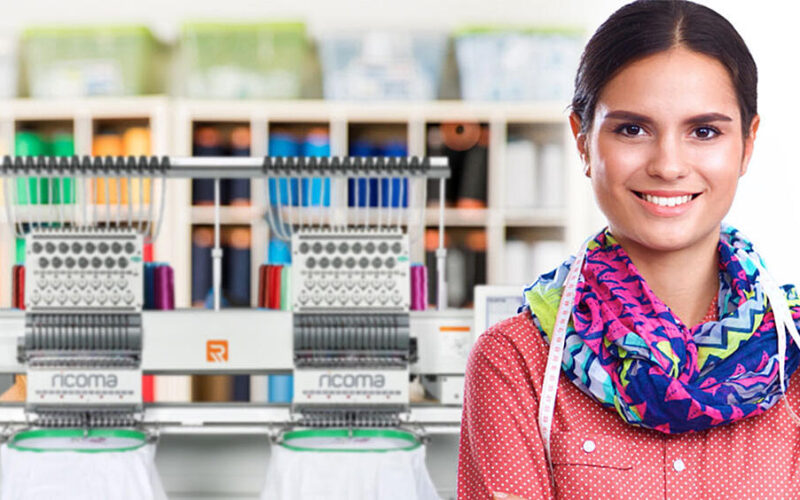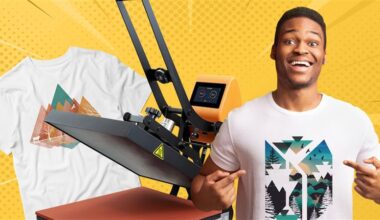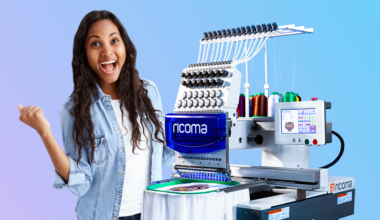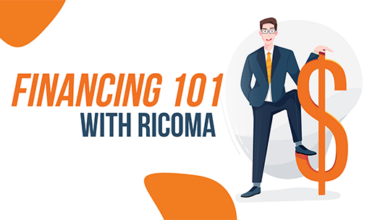As a business owner, your ultimate goal is to generate the highest profit at the lowest possible cost.
Unfortunately, it’s not as cut and dry in the embroidery business.
In fact, most embroidery businesses are unnecessarily throwing away money every day – making the cost of doing business a lot higher than it should be.
Usually, it’s because they’re missing these five embroidery business must-haves:
Without them, you’re actually missing out on opportunities for growth. In this article, you’ll learn how you can maximize your efforts in all of these areas and find out exactly how missing one or more of these attributes will set you back.
#1: Increased efficiency
When we think of efficiency in the embroidery business, we imagine the tips we usually hear…
“Hoop and prepare one item while another item is embroidering.”
“Remove stabilizer and trim excess threads while your next item is embroidering.”
While that describes the ideal scenario, it’s almost impossible to multitask if you’re babysitting your machine due to constant interruptions.
We’ve found that a lot of embroiderers are stalling production because of the following efficiency killers:
- Thread breaks
- Insufficient machinery
To avoid falling victim to these efficiency killers, you’ll need to start with the right knowledge.
This is a real example of an issue an embroiderer ran into.

Incorrect tension is a leading cause of thread breakage. In our Ultimate Thread Break Troubleshooting Guide, we cover proper tension techniques and the four types of thread breaks and the issues related to each.
Another major efficiency killer we often hear of is the production capacity of your equipment.
You need to have equipment that is capable of keeping up with your output – or else you’ll end up paying for it in labor like our customer Jeffery Wilson of Seven Twelve Apparel.

While single-head commercial embroidery machines are perfect for getting started or determining if you can build a customer base for embroidery, you may want to start off with a larger machine or a single-head/multi-head combo if you’re like Jeffery.
Jeffery had a screen printing shop before he got into embroidery, so he had an existing customer base that was in need of embroidered goods. Most existing custom apparel businesses like Jeffery’s should start off with a multi-head for the larger orders. Meanwhile, you can keep a single-head for samples, testing, one-off orders, or caps if you happen to do fewer caps than flats. Click here to learn how Ricoma’s latest multi-head actually increases efficiency.
#2: Quality
High quality can be the difference between gaining repeat business and losing future business to a competitor. Quality and efficiency go hand-in-hand in the sense that they both require three factors to avoid running into issues:
- Background knowledge of the craft
- Quality machinery
- Proper tension
Background knowledge of the craft
A strong understanding of the craft will result in better quality work. You need to know how the stabilizer, design and fabric work together to produce the best quality. Otherwise, you can end up turning in a poor finished product and run the risk of getting bad reviews. On the other hand, great quality can result in repeat business and referrals.
Knowing the variation of stabilizers that are available will help you avoid production issues and ensure your clients receive high-quality long-lasting embroidery.

High quality machinery
High quality embroidery is also achievable with the right equipment. Invest in commercial machinery that has the capability to run detailed designs without missing any stitches. Machines with wide and sturdy timing belts ensure the most precise stitches stand out.
However, keep in mind that quality equipment won’t make up for lack of knowledge. You will need to familiarize yourself with the fundamentals such as the best practices for different types of fabrics and thread tension. Click here to see what other embroiderers are saying about Ricoma’s latest multi-head.
Proper tension
While home embroidery machines have automatic tension, commercial embroidery machines require manual tension adjustments. Familiarizing yourself with how tension adjustments affect your fabric is essential to attaining the best quality embroidery. When tension is off, you can run into issues like your bobbin thread showing through, looping stitches, skewed designs and frequent thread breaks.
If you suspect your machine is having tension issues, conduct an “I” test. To run this test, sew a one-inch-tall satin column on each needle. Make sure you’re using a similar piece of fabric to the one you plan to embroider.
Once complete, examine the reverse side of the fabric. Ideally, the correct bobbin tension setting will be divided into three equal parts: One-third bobbin thread running exactly down the center of the column, and one third top thread running down each side. Otherwise, you’ll need to adjust your bobbin tension and top tension until the columns are even.
Watch the video below to find out how to adjust your bobbin and top thread tension.
#3: Wide Variety
Not offering a variety of services can put you at a disadvantage – especially in the custom goods business.
How many times have you left a website or store and bought from another one just because the first one didn’t have everything you needed? Chances are: it’s probably a lot. That’s why the one-stop shopping principle is so important in this business.
Consider offering all five of these commonly requested items. Check out this breakdown of the embroidery costs based on average wholesale prices in the industry.

Among this list, cap embroidery is perhaps the least supplied in the industry due to the learning curve. Familiarizing yourself with how several adjustments yield better results on caps can allow you to offer cap embroidery and position you at a major advantage among the competition.
If you’re among those embroiderers who steer away from cap embroidery, you might be making one of these seven costly mistakes. Click here to see what you should do instead.
The best part about caps is that they incur the same costs as other low-priced items such as totes and t-shirts – but they can be sold at a much higher profit. You can sell these custom caps anywhere from $15 to $20 (five to six times the price of raw materials) due to their high perceived value.
Click here to learn the 7 costly cap embroidery mistakes and what you should to do instead.
#4: Pricing Knowledge
What do all embroiderers struggle with the most?
Determining pricing.
Veteran or not, embroiderers are constantly questioning whether their prices are accurately reflecting all of their costs.
That’s because pricing in the embroidery business goes far beyond the cost of doing business and materials. After accounting for all the time it takes to complete an order, you can’t possibly base your profit margin solely off the price of raw materials. Otherwise, you’ll be working for FREE.
That’s why time plays such a huge role in your final price.
For years, embroiderers have been charging by stitch count. A general rule of thumb embroiderers follow is to charge $1 per 1,000 stitches. While that system can work in some scenarios, it is also flawed in many ways.
For instance, a cap with a design of 5,000 stitches couldn’t possibly go for $5 plus the cost of the cap. Otherwise, you’ll be charging $7 to $8 on a cap that takes at least 20 minutes to prepare, embroider and cleanup. That’s about a $4 profit in 20 minutes – or about $12 an hour.
That is simply not sustainable.
In those cases, you’ll need to set up an hourly rate for your time like our customer Samantha Meeks does when she embroiders sashes. You should always charge a setup fee, whether it is worked into the price of the garment or charged as a separate fee.

While the cost of time and materials work together to determine profitability, you also have to keep equipment in mind. In order to yield the most profit, your embroidery machine should have the capability to embroider flats and caps.
Watch out for embroidery machine companies that charge extra for attachments. You’ll get the highest return-on-investment with an all-inclusive package that includes all the hoops and cap attachments you need to embroider.
You also want to keep in mind that the more heads and needles you have, the less time you’ll spend on labor.
Although you’ll pay more in equipment costs overall, you’ll pay less in labor over time. That means, you’ll take all those labor costs and convert them into pure profit. Plus, you’ll have time to accept larger, more profitable orders.
Based on the comments on the Embroidery & Printing Business Help Facebook group, most embroiderers seem to agree with the “go big or go home” mentality when it comes to setting up shop.

#5: Durable machinery
Your machinery’s durability and reliability will also play into the last four must-haves mentioned. You can’t have efficiency, quality, variety or profitability if your machine isn’t built to withstand the test of time.
The problem is…most people are unfamiliar with the technical features that make an embroidery machine strong and reliable.
Most blogs will tell you to consider purchasing durable commercial equipment and recommend certain brands, but won’t tell you what features to look for in that equipment. Only the embroidery machine pros will know the inner workings that cause a machine to yield great results.
Luckily, Ricoma’s CHT2, comes equipped these must-have qualities.
Here are the top 3 features that make the CHT2 strong enough to produce excellent quality.
- Wide X + Y axis timing belts: The wider and sturdier the timing belts are engineered, the steadier your machine will run at higher speeds and the better your designs will show up.
- High torque: Torque is actually a measure of how much force on an object causes torsion or rotation. Just like higher torque in a car will grant more power to accelerate, higher torque in an embroidery machine’s engine will grant more power and steadiness to run detailed designs at high speeds.
- Elevated X + Y drives: Choose machines with easily accessible X + Y drives for quick and easy maintenance. The more elevated the drives are positioned, the less susceptible they will be to the buildup of dirt and debris over time. This will combat machine wear and tear issues. Click here to see what others are saying about the CHT2.
Bottom Line
Now that you’ve seen how these five factors can have such a drastic effect on your profitability, keep in mind these key takeaways.
- Wide variety and high quality will help attract and retain clients. Subpar quality and little variety will drive customers away and hurt future business.
- Increased efficiency will cut labor costs drastically and attract clients with faster turnarounds.
- With the proper pricing knowledge, you’ll have a pricing structure that accounts for hidden costs such as time. That way, you’ll never lose money.
- Durable machinery will last longer over time, cutting the high costs of machine downtime and having to replace your machinery.
As you can see, all of these factors tie back into your overall goal: profitability. With these in mind, you’ll have a clear vision of what you need to generate the highest profit at the lowest possible cost in your embroidery business.
Are you curious how Ricoma can help your custom apparel business?
Schedule a call for a Quick 30 minutes “Embroidery Talk” with our specialists to see if you’re really ready to start or expand your business. Our specialists can help you…
- Find helpful resources to kick start your embroidery education
- Answer any questions regarding pricing your items for profit and sourcing materials
- Help you compare and contrast different machine types and branch in the industry
- Help you determine which machine would suit your business based on your current and future goals






